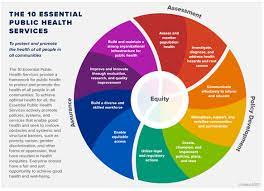Introduction
Public health policy stands as the cornerstone of disease prevention strategies, playing a crucial role in safeguarding the well-being of communities. As we delve into the intricate web of public health policy, it becomes evident that its influence extends far beyond the realms of healthcare institutions, reaching into the fabric of society. In this article, we will explore the historical evolution, key components, challenges, and future trends in public health policy, unraveling its indispensable role in preventing diseases.
Historical Perspective
Public health policies have evolved over centuries, responding to the changing landscape of infectious diseases and emerging health threats. From the rudimentary measures of quarantine in the Middle Ages to the modern vaccination campaigns, the historical trajectory demonstrates the adaptive nature of public health policies in disease prevention.
Key Components of Effective Public Health Policies
Surveillance and monitoring, vaccination programs, and health education emerge as the pillars of effective public health policies. Surveillance enables early detection of outbreaks, vaccination programs build community immunity, and health education fosters a proactive approach to wellness.
Case Studies
Examining both successes and failures in disease prevention through public health policies provides valuable insights. From the triumphs of eradicating smallpox to the challenges faced during the HIV/AIDS epidemic, these case studies offer lessons that shape the landscape of public health.
Challenges in Implementing Public Health Policies
Political, socioeconomic, and technological factors pose challenges in implementing public health policies. Striking a balance between political interests, addressing economic disparities, and adapting to rapid technological advancements are essential for successful policy execution.
Innovations in Public Health Policy
Incorporating technological advancements and fostering global collaboration mark the innovative frontiers of public health policy. From leveraging data analytics for disease prediction to forging international partnerships in research and resource allocation, innovations are reshaping the landscape.
Public Participation in Policy Development
Involving communities in policy development enhances effectiveness. Successful examples of community engagement showcase the power of collective efforts in tailoring policies that resonate with diverse populations.
The Role of Public Health Policy in Pandemic Preparedness
Recent global health crises emphasize the need for robust pandemic preparedness. Analyzing lessons learned and advocating for adaptive policies are vital in fortifying the world against future pandemics.
Ethical Considerations in Public Health Policies
Ethical dilemmas surround public health policies, requiring a delicate balance between individual rights and the greater good. Transparency, accountability, and respect for autonomy guide ethical decision-making in policy formulation.
Future Trends in Public Health Policy
Emerging technologies and shifting paradigms in healthcare are shaping the future of public health policy. Integrating AI, telemedicine, and embracing holistic approaches herald a new era in disease prevention.
The Interplay Between Public Health Policy and Environmental Health
Addressing the nexus between public health policy and environmental health is pivotal. Sustainable practices and climate-conscious policies contribute to a resilient and healthy society.
Funding and Resource Allocation
Challenges in allocating resources underscore the need for strategic funding approaches. Adequate resource allocation ensures the implementation of effective public health policies.
Public Health Policy and Non-Communicable Diseases
Beyond infectious diseases, public health policies play a vital role in combating non-communicable diseases. Lifestyle interventions and regulatory measures are imperative in curbing the rise of chronic illnesses.
Evaluation and Continuous Improvement
Metrics for assessing policy effectiveness and recognizing the iterative nature of public health policy underscore the importance of evaluation and continuous improvement.
Conclusion
In summary, the role of public health policy in disease prevention is multifaceted and indispensable. From historical roots to future trends, navigating the complexities of policy formulation and implementation shapes the health landscape for generations to come. As we stand at the intersection of innovation, ethics, and community engagement, the call to action resonates loud and clear for robust and adaptive public health policies.
FAQs
- How can communities actively participate in the development of public health policies?
- Communities can engage in town hall meetings, focus groups, and online platforms to voice their concerns and contribute to policy development.
- What ethical considerations should be prioritized in public health policy formulation?
- Transparency, accountability, and respecting individual autonomy are paramount ethical considerations in public health policy.
- How do emerging technologies contribute to the future of public health policy?
- Emerging technologies such as AI and telemedicine enhance surveillance, early detection, and overall effectiveness of public health policies.
- What measures can be taken to address challenges in funding public health policies?
- Strategic resource allocation, public-private partnerships, and advocating for increased funding are key measures to address funding challenges.
- Why is the interplay between public health policy and environmental health crucial?
- The connection between public health and the environment underscores the importance of sustainable practices for long-term disease prevention.

